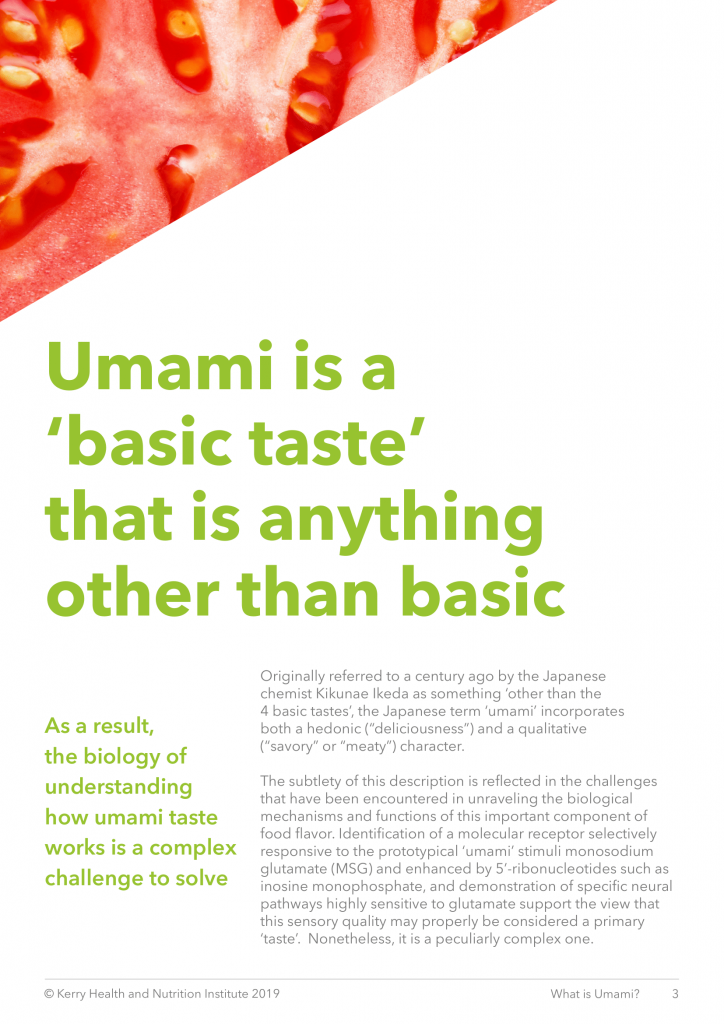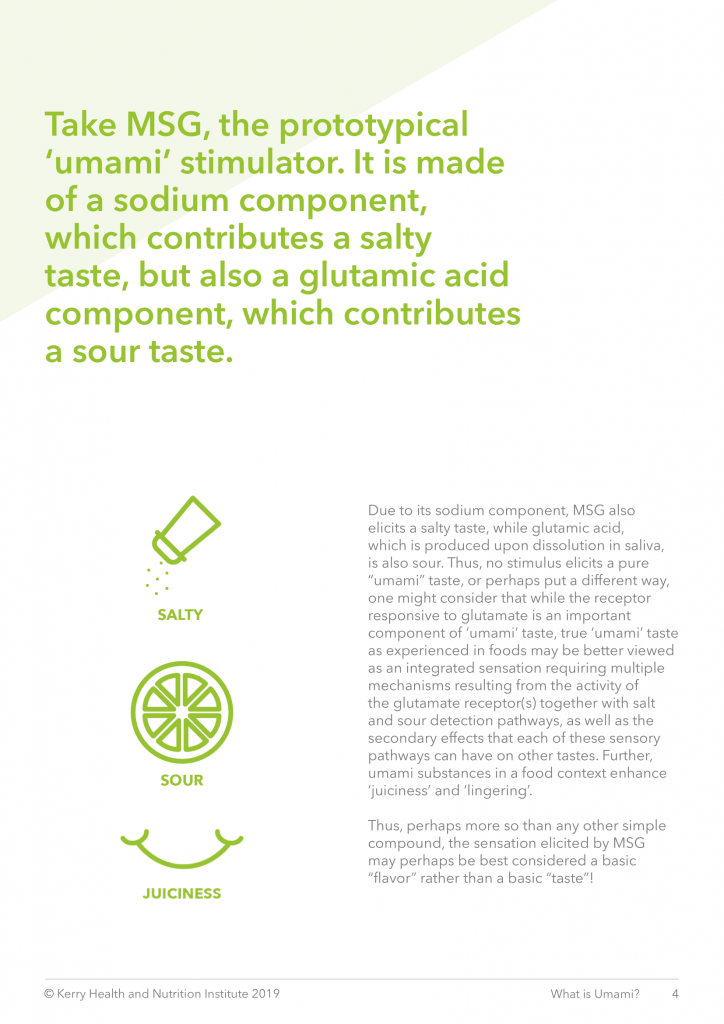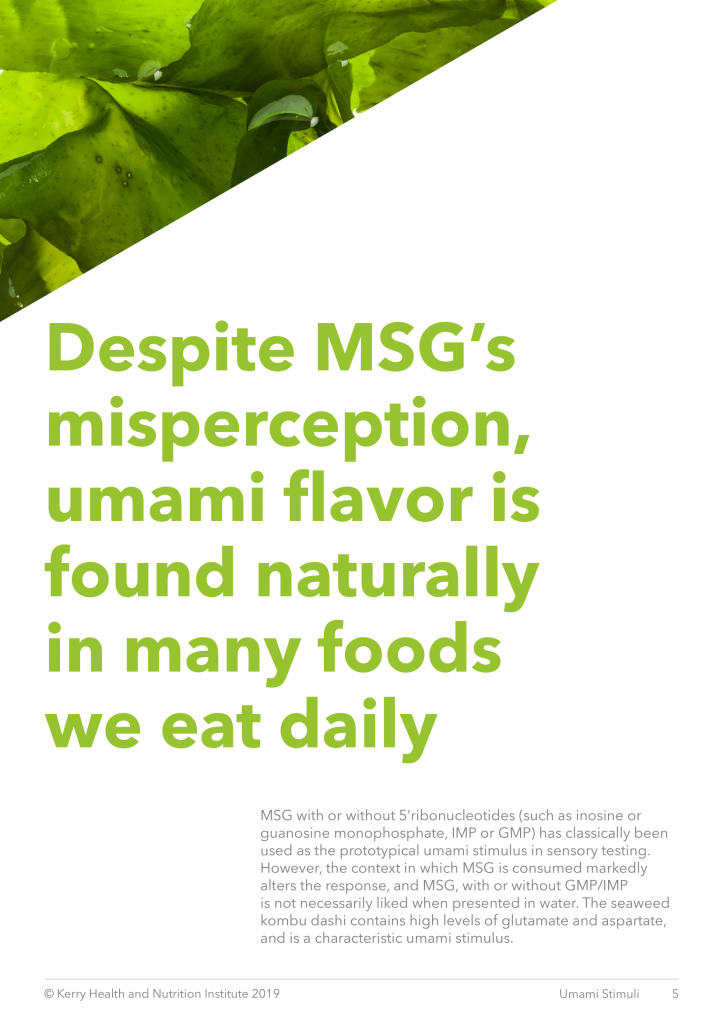Umami is one the primary tastes, but unfortunately the way many people have learned about it is through the negative perception of monosodium glutamate (MSG), the prototypical stimulus of umami taste. The questions ‘what does MSG do to your body?’ and ‘why is MSG bad for your health’ top the list of MSG-related internet searches, and ‘MSG-free’ claims are becoming more common. Despite the negative perception of MSG, which is likely undeserved, we are beginning to see a rise in popularity of umami as a flavor.
What many people don’t know is that MSG isn’t the only source of umami flavor. In fact, foods we eat every day contain this flavor, like mushrooms, tomatoes, or aged cheese. Our bodies have developed complex machinery to sense umami flavor in food, but why?
In this white paper, we break down the complexities of questions like:
- What is MSG and umami flavor? How do our bodies sense it?
- Where is umami found naturally?
- Why does umami flavor exist in food?
Download the full white paper for free here.




Read on…download the full paper for free here.

 Dr. Rawson is an Associate Director and Member of the Monell Chemical Senses Center in Philadelphia, where she directs Monell’s corporate sponsorship program and leads research in taste cell biology. Dr. Rawson holds multiple patents, has authored over 65 publications, and is an invited speaker and contributor on taste, olfaction and nutrition for conferences, organizations and media outlets around the world.
Dr. Rawson is an Associate Director and Member of the Monell Chemical Senses Center in Philadelphia, where she directs Monell’s corporate sponsorship program and leads research in taste cell biology. Dr. Rawson holds multiple patents, has authored over 65 publications, and is an invited speaker and contributor on taste, olfaction and nutrition for conferences, organizations and media outlets around the world. 